Weeding Out Shoplifters
Communication with customers and employees is the key to preventing theft in garden centers. A 2007 report from the National Retail Security Survey estimated total retail losses in 2006 at $41.6 billion, an average 1.6 percent per store of retail shrinkage, which includes inventory losses occurring from employee theft, shoplifting, organized retail crime, administrative error and vendor fraud. Retailers of all sizes are susceptible to shoplifting, a problem that may increase as the economic outlook dims. So how can garden centers combat theft?
Talk About It
One way garden centers can prevent theft is by employing a dedicated loss prevention team. Todd Waight is the manager of loss prevention at Bachman’s in Minneapolis. Upon his arrival at Bachman’s eight years ago, he implemented a three-component loss prevention program.
“The most important thing in a loss prevention program is communication,” Waight says. “Don’t be afraid to talk about what’s happening in your store. Some storeowners are wary about telling employees theft is occurring in the store or that employees are stealing from the center.” Be willing to tell employees specifically what the losses were, list the top 10 stolen items and detail the percentage of sales lost.
To make communication easier among Bachman’s seven stores, Waight put up bulletin boards. He posts monthly sales reports of the company as a whole and newsletters that contain new ideas and tips to help employees get involved with loss prevention.
Communication with customers is key, too. Waight advises his employees to watch customers closely. If it looks as if they’re about to walk out of the store with merchandise without paying, he suggests employees say, “I’m sorry, I don’t think I rang that up for you. Let’s go back and get that taken care of.”
“This way, the customer leaves knowing that we’re paying attention to them,” Waight says.
Educate Your Employees
The second component to Waight’s program is the Loss Prevention and Safety Team, a voluntary program open to all Bachman’s employees. Three to four team members work at each store, and they are given additional information about theft prevention. “We still don’t teach them how to physically catch shoplifters, though, because that’s not their job,” says Waight. “We just want to keep them aware.”
Waight’s loss prevention program also incorporates a reward system called the Theft Is Preventable (TIP) awards. TIP is a program offering employees a cash incentive for reporting customer or employee dishonesty that leads to a productive recovery, arrest or resolution of an internal theft problem. Employees call the TIP line, and every discussion Waight has with employees is kept confidential. Employees may also remain anonymous if they choose. Employees who prevent customer theft, such as stopping someone at the door with unpaid merchandise or catching them loading merchandise that wasn’t purchased into their car, receive a $50 award.
“This encourages employees to continue to look for shoplifters and suspicious activity,” Waight says. “We also give them a badge for their nametag that says they are a TIP award recipient. It impresses customers, and it gets other employees who don’t have that badge more aware of what’s going on so that they can look for suspicious things as well.”
A higher reward is offered to employees who report other employees: $100, plus 10 percent of the recovered merchandise, if they help stop internal theft. “We understand that it’s much harder to turn fellow co-workers in for things, so the reward is much higher,” Waight says.
Use the Web
Another way garden retailers can prevent losses is by adding their company to a Web-based retail loss prevention database. The National Retail Foundation’s Retail Loss Prevention Intelligence Network, a tool intended to assist loss prevention professionals and law enforcement, addresses the growing problem of organized retail theft, fraud and other major incidents. Through anonymous sharing capabilities, retailers can pool information and investigative resources to detect, prevent and investigate these issues and work with law enforcement agencies in a collaborative manner.
The Oregon Association of Nurseries (OAN) in Wilsonville, Ore., has a similar system for notifying the industry of theft, called Emerald Alert.
“Emerald Alert was really started as a result of metal theft increasing over the last several years,” says Jeff Stone, director of government relations for OAN. “It’s a good way of letting somebody in a certain area know that an item was stolen so they can keep watch for cars and suspicious activity.”
Stone says staff members review information collected from a form on OAN’s website, then they e-mail it to subscribers, usually within 30 minutes.
Elizabeth Peters, OAN’s director of communications and publications, estimates nearly all 1,500 members subscribe to the Emerald Alert e-mails. “The greatest value is being able to stay informed with what’s happening with theft,” Peters says. “The best defense against this is the eyes and ears of people out in the field, and when we’re on alert, we’re more apt to not allow the theft on our properties.”
Hold Customers Accountable
Waight has also installed security cameras, public view cameras which provide a live feed so customers can see themselves walk into the store and electronic article surveillance (EAS), a method that uses special tags fixed to merchandise that cashiers must remove before allowing the customer to leave.
“If a store wants to invest in loss prevention technology, a public view camera is great and inexpensive,” says Waight. “It’s much less expensive than EAS.” Waight estimates EAS, for two doors, costs between $60,000 and $70,000 to install, plus $3,000 to $5,000 extra for tags each year, while a public view camera is a one-time purchase and costs between $8,000 and $16,000.
“Customers believe you have cameras in the store that are functioning, and it’s a big deterrent for the average customer,” Waight says. “About 90 percent of your customers will be deterred by that one camera.”
For smaller garden centers with less money to spend on high-tech surveillance products, a simple way of keeping an eye on merchandise is by placing security tape on any purchase that cannot be placed into a bag. Employees at Bachman’s know to look for a certain color of security tape, which changes monthly, as customers leave the store.
Keep Your Eyes Peeled
You can also lessen the chances of a customer slipping by without paying for their merchandise by reminding your employees to look at the bottom of each customer’s cart when they are checking out. If employees are in the habit of looking at the bottom of each cart, it will ensure no items are missed, such as soils or flats of annuals.
Also, tell employees to scan each item separately and to use the quantity key as little as possible. This is important, particularly considering that not all types of annuals and perennial plants are the same. For example, hostas and lilies vary by style and price. By scanning each item in a customer’s cart individually, employees will help ensure your inventory is accurate and that the correct price is charged for each item. Employees should also never rely on the customer to give them an accurate count of the number of plants they are buying.
Still, Waight believes the best way to prevent theft is through the use of positive customer service. A reputation for good customer service is one of the best defenses against shoplifting.
“When we stop customers at the door,” Waight says, “the majority of them get embarrassed, and they just won’t do it again.”


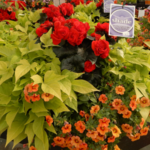





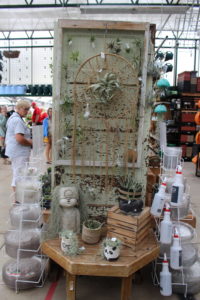




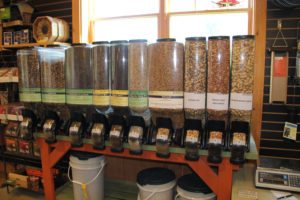
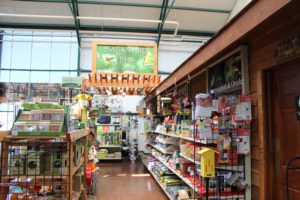


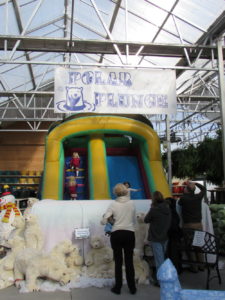
 Videos
Videos





